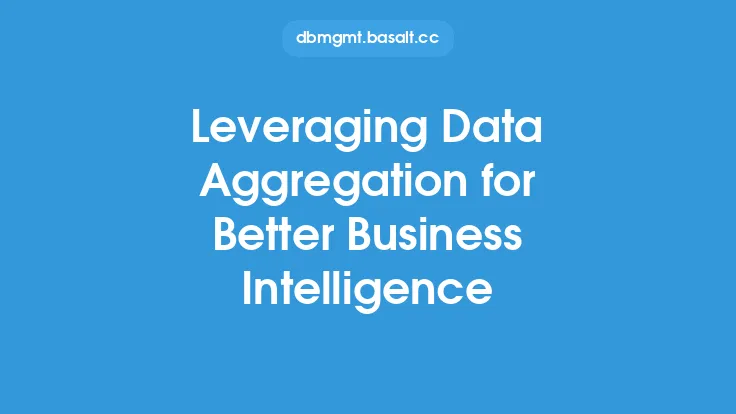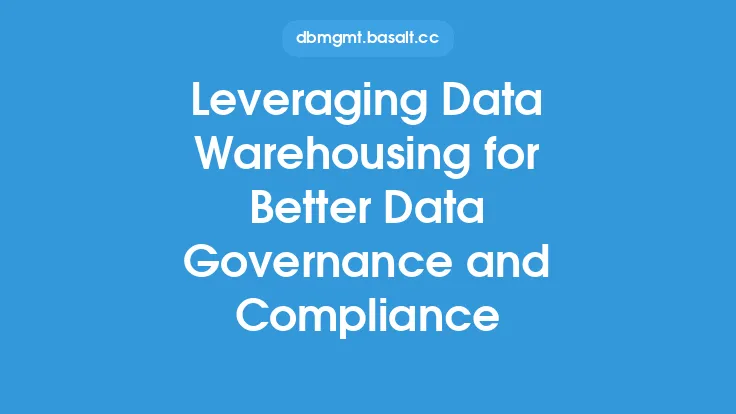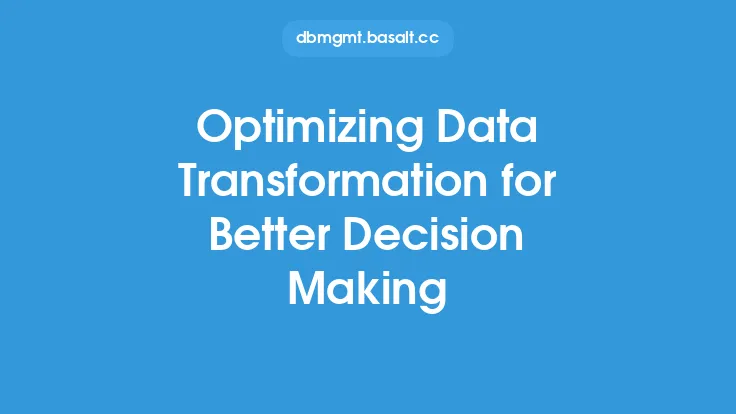In the realm of data analysis and business intelligence, the ability to make informed decisions is crucial for driving success. One key strategy that has gained significant attention in recent years is data marting, a process that involves transforming and aggregating data from various sources into a unified, easily accessible format. By leveraging data marting, organizations can unlock the full potential of their data, gaining valuable insights that can inform better decision-making and ultimately lead to improved business outcomes.
Introduction to Data Marting
Data marting is a subset of data warehousing, focusing on a specific business area or department. It involves extracting data from various sources, transforming it into a consistent format, and loading it into a centralized repository. This process enables organizations to create a single, unified view of their data, making it easier to analyze and extract insights. Data marting is particularly useful for organizations with complex data environments, as it helps to simplify data access and reduce the complexity associated with querying multiple data sources.
Benefits of Data Marting
The benefits of data marting are numerous, and organizations that implement this strategy can expect to see significant improvements in their decision-making capabilities. Some of the key benefits of data marting include:
- Improved data accessibility: By creating a centralized repository of data, organizations can provide users with easy access to the information they need, reducing the time and effort required to gather and analyze data.
- Enhanced data consistency: Data marting helps to ensure that data is consistent across different sources, reducing errors and inconsistencies that can arise from manual data entry or disparate data systems.
- Increased data visibility: By providing a unified view of data, organizations can gain a clearer understanding of their business operations, identifying trends, patterns, and areas for improvement.
- Better decision-making: With access to accurate, up-to-date data, organizations can make informed decisions, reducing the risk of errors or missteps.
Data Marting Architecture
A typical data marting architecture consists of several components, including:
- Data sources: These are the various systems and applications that provide data to the data mart, such as customer relationship management (CRM) systems, enterprise resource planning (ERP) systems, and other databases.
- Extract, transform, load (ETL) tools: These tools are used to extract data from the source systems, transform it into a consistent format, and load it into the data mart.
- Data mart: This is the centralized repository that stores the transformed data, providing a single, unified view of the organization's data.
- Data access tools: These tools enable users to access and analyze the data in the data mart, such as business intelligence software, reporting tools, and data visualization platforms.
Data Marting Techniques
There are several data marting techniques that organizations can use to optimize their data analysis and decision-making capabilities. Some of the most common techniques include:
- Star and snowflake schema: These are data modeling techniques that help to optimize data storage and query performance, reducing the complexity associated with querying large datasets.
- Data aggregation: This involves summarizing data at different levels of granularity, enabling organizations to analyze data at various levels of detail.
- Data partitioning: This involves dividing large datasets into smaller, more manageable pieces, improving query performance and reducing the risk of data overload.
Best Practices for Data Marting
To get the most out of data marting, organizations should follow several best practices, including:
- Define clear business objectives: Before implementing a data marting strategy, organizations should define clear business objectives, ensuring that the data mart is aligned with the organization's overall goals and objectives.
- Choose the right data: Organizations should carefully select the data that will be included in the data mart, ensuring that it is relevant, accurate, and up-to-date.
- Design a scalable architecture: The data marting architecture should be designed to scale with the organization's growing data needs, ensuring that it can handle increasing volumes of data and user demand.
- Implement robust security measures: Organizations should implement robust security measures to protect the data in the data mart, ensuring that it is secure and compliant with relevant regulations.
Common Challenges and Solutions
Despite the benefits of data marting, organizations may encounter several challenges when implementing this strategy. Some of the most common challenges include:
- Data quality issues: Poor data quality can undermine the effectiveness of the data mart, leading to inaccurate insights and poor decision-making.
- Data integration challenges: Integrating data from multiple sources can be complex, requiring significant time and effort to resolve.
- Scalability issues: As the volume of data grows, the data mart may become overwhelmed, leading to performance issues and decreased user satisfaction.
To overcome these challenges, organizations can implement several solutions, including:
- Data quality checks: Regular data quality checks can help to identify and resolve data quality issues, ensuring that the data in the data mart is accurate and reliable.
- Data integration tools: Specialized data integration tools can help to simplify the process of integrating data from multiple sources, reducing the time and effort required to resolve data integration challenges.
- Scalable architecture: Designing a scalable architecture can help to ensure that the data mart can handle increasing volumes of data and user demand, reducing the risk of performance issues and decreased user satisfaction.
Conclusion
Data marting is a powerful strategy for organizations seeking to improve their decision-making capabilities and drive better business outcomes. By providing a unified view of data, data marting enables organizations to gain valuable insights, identify trends and patterns, and make informed decisions. While there are several challenges associated with implementing a data marting strategy, organizations can overcome these challenges by following best practices, implementing robust security measures, and designing a scalable architecture. As the volume and complexity of data continue to grow, data marting is likely to play an increasingly important role in driving business success, enabling organizations to unlock the full potential of their data and achieve their goals.





